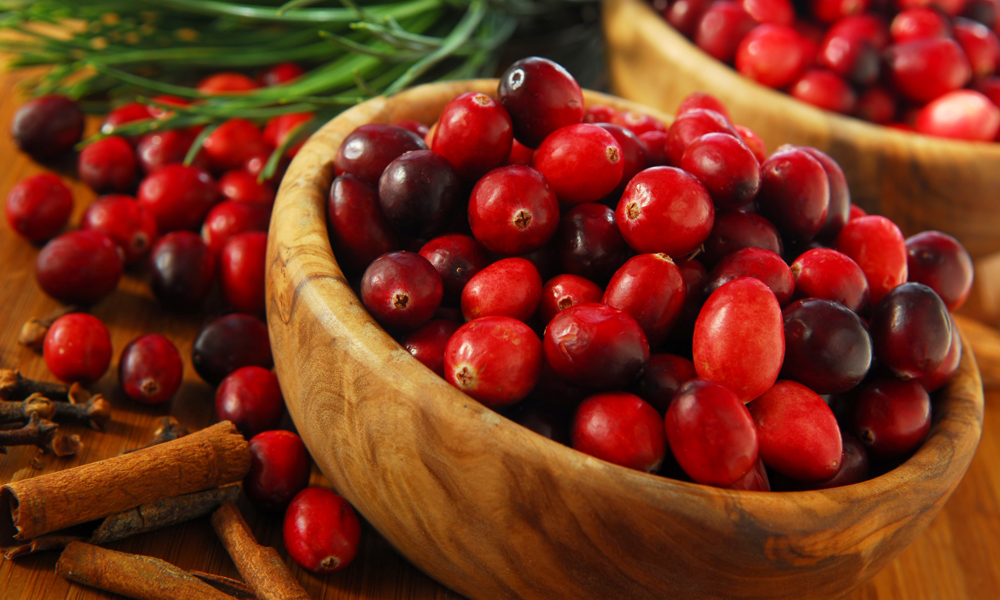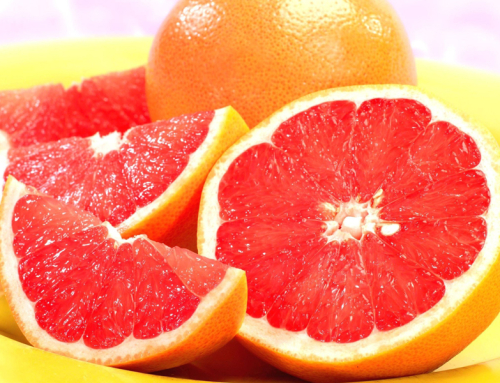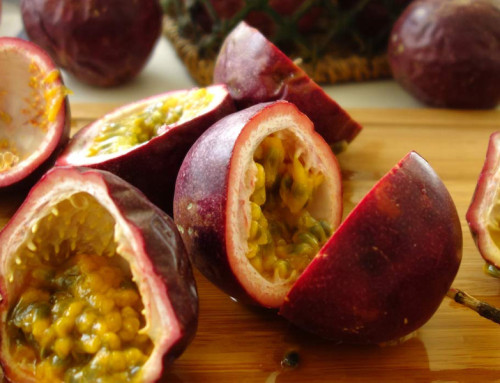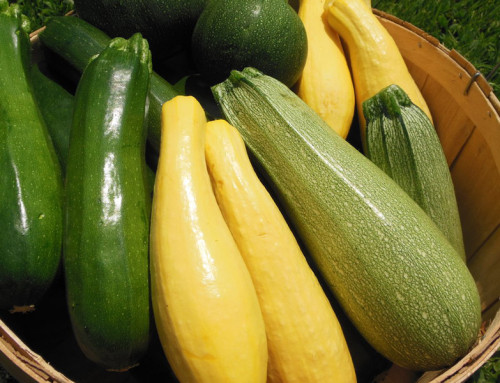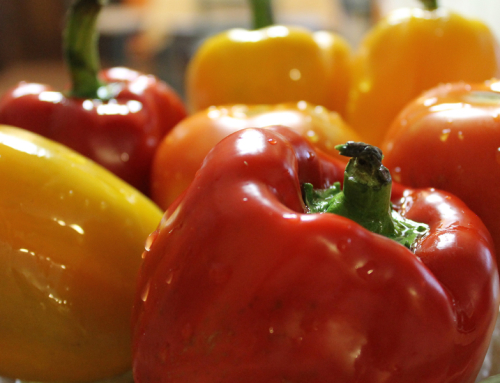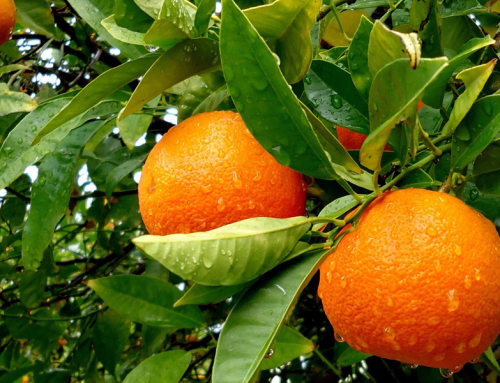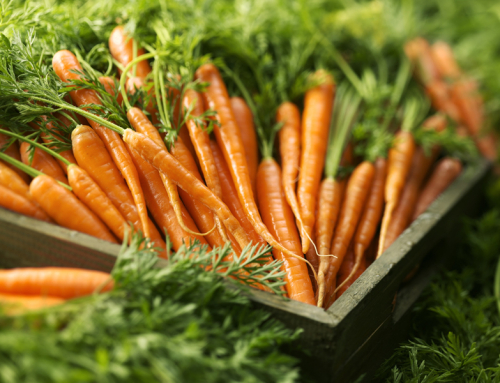- 1 cup (approx. 100 g) – 46 calories
- Dried and sweetened (approx. 40 g) – 123 calories
- Cranberry juice cocktail, 8 fl oz (approx. 253 g) – 144 calories
- Cranberry sauce, sweetened, canned (approx. 456 g) – 688 calories
The cranberry may well be seen as a superfruit to some, due to its rich phytochemical content. Cranberries grow from creeping evergreen bushes. During growth, the shrub may grown to resemble a crane, resulting in the early name of craneberry that was later shortened to cranberry. From the genus Vaccinium of the family Ericaceae, these nutritious fruits are widely cultivated throughout the world but grow naturally all throughout the Northern Hemisphere.
Basic Information
Cranberries prefer cooler climates and can be found growing naturally in acidic, sandy bogs in these climates. These fruits are often white when first mature, progressing to the deep red color to which consumers are more familiar. The majority of the commercial crop is harvested from late September through December by a flooding method for fruits that are used as juice and other processed food types. Less bruising occurs with dry harvesting, allowing the cranberries to be sold fresh. These nutritious berries contain four centrally located, edible seeds. Very acidic in composition, cranberries are very tart in flavor.
Cranberry’s Nutritional Components
These tiny berries may very well be referred to as a superfood due to their phytonutrient content. Low in calories and fat, 100 grams of these fruits provide only 46 calories, making them an excellent addition to those who wish to lose weight. These fruits also contain healthy fiber and significant amounts of both Vitamin C and manganese. Phytonutrients such as proanthocyanidins and polyphenols provide many health benefits.
Benefits for Health
- Urinary Tract Infection
Cranberry juice has long been known for its ability to protect against infections of the bladder and urinary tract. It was formerly believed that it was the acidic quality of the juice that prevented infection, but science has since discovered that the anthocyanidin flavonoids from this fruit actually prevent certain bacteria from attaching to the bladder wall. - Cardiovascular Disease
These bright red berries may help to increase amounts of good HDL cholesterol while lowering bad LDL cholesterol. The active phytochemicals have also been shown to reduce the formation of plaque along the insides of arterial walls, helping to reduce atherosclerosis, heart attack, and stroke risk. These active components may also help to lower blood pressure. - Oral Health
These superfruits have also been shown to reduce the risk of cavities in teeth. The anti-inflammatory and antibacterial properties of cranberries may also play a role in the prevention of periodontal gum disease. - Immune System
The high antioxidant content of these little fruits is one of the highest for all fruits, beaten only by blueberries. The nutritional components can help to scavenge free radicals in the body, reducing the risk of certain diseases. The anti-inflammatory effects can also reduce the risk of some disease. - Other Benefits
Studies are showing promise for cranberries to possibly be effective at aiding weight loss and in fighting certain types of cancer cells.
How to Eat Cranberries
These highly nutritious berries can be eaten raw or cooked. Before using, wash fresh cranberries thoroughly to remove any dirt or residues. Many health benefits are found from eating this fruit in its whole form, while others are found in drinking its juice, preferably unsweetened for maximum health. You can use cranberries in many ways:
- Meat dishes: Whole cranberries can be cooked down a bit with a little sweetener and some seasonings and pair well with your main meat dish, especially pork and chicken.
- Salads: Fresh or dried cranberries make a great addition to any salad. You can also juice the berries and add to a little olive oil for a healthy dressing option.
- Baked goods: Whole fresh or frozen cranberries are delicious when added to your other baked dishes, such as fruit crisps, pies, and muffins. Combine with other fruits or berries or use alone for a nutritional punch. You can add frozen cranberries to the batter without defrosting first to reduce how much they are cooked.
- As a side: You can cook cranberries down into a sauce, jelly, or compote to serve as a side dish. This is very common during the winter holidays in many regions.
- Beverages: Fresh cranberry juice can be consumed as-is. However, it may be mixed with the juice of other fruits to reduce the tartness and to make it more palatable. Many alcoholic drinks can be made with the juice of this fruit.
- Topping: Dried cranberries taste great when sprinkled on yogurt, cereals, and other cold or hot dishes.
How to Choose and Store Cranberries
Fresh cranberries are typically available during the late fall through the early winter in stores, while frozen, canned, dried, and otherwise processed varieties can be found all year long. When choosing fresh berries, select those that are dark or bright red in color, firm and plump, with no visible defects. You can store these fruits in the refrigerator in a sealed bag for two to three weeks. Be sure to remove any soft or discolored berries before storing as they will affect the longevity of the rest of the batch. Frozen cranberries can last at least a year in a properly sealed container. Dried and processed berries should be stored as recommended and consumed by the date on the package.
Safety Concerns
While these superfruits are generally considered to be safe for most consumers, there are potential risks. These berries may increase the effects of blood-thinning medications, such as warfarin, in certain individuals, so those taking these medicines may want to avoid cranberries. Additionally, these little fruits contain naturally-occurring oxalic acid, that might increase the risk of kidney stones, so additional water should be consumed when adding cranberries to the diet of those at increased risk.

